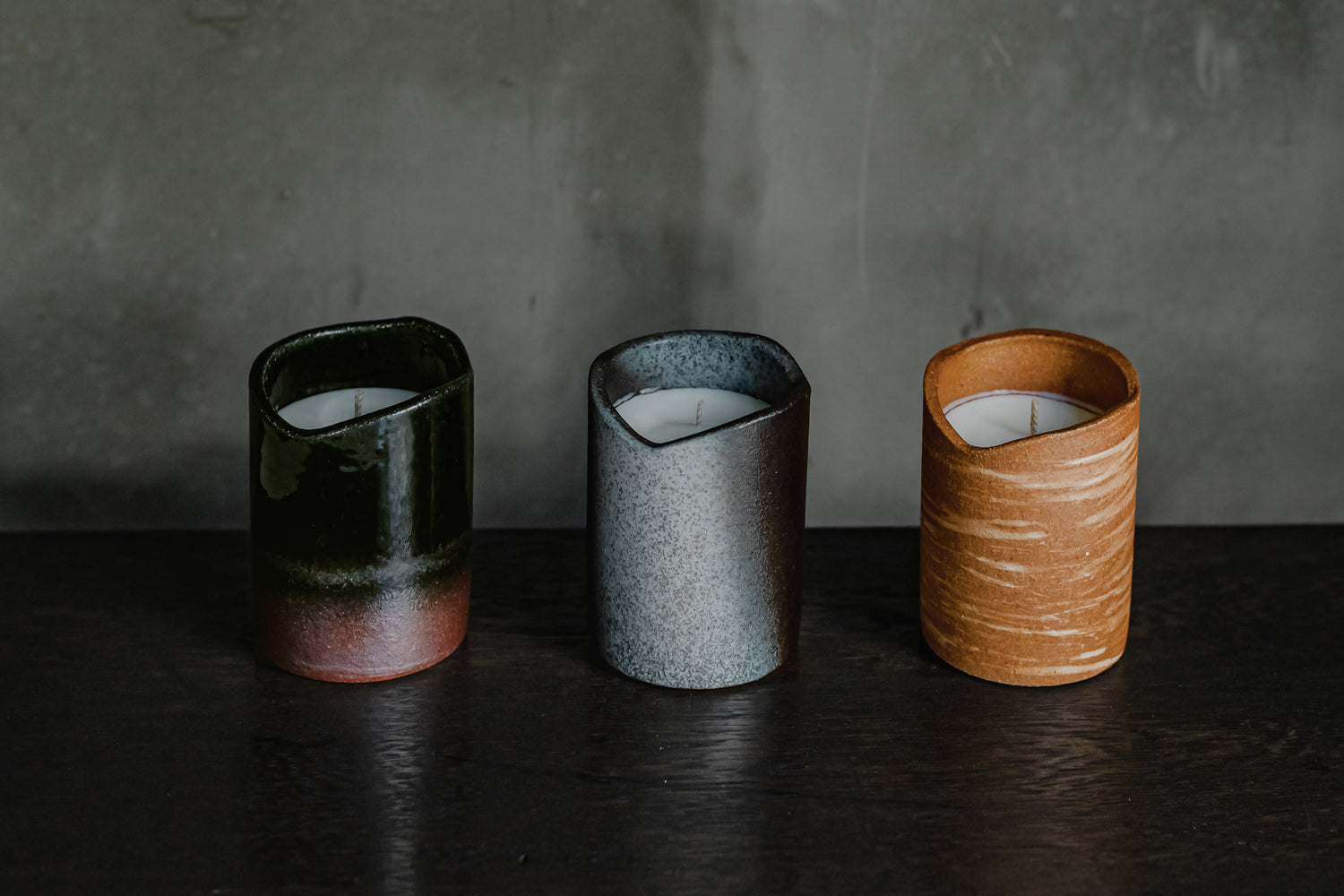
Starting with candles, we then started selling incense, and coincidentally have continued to develop products related to fragrance. There was no particular discussion of making fragrance-related items. However, it seems that scent is a way to express the delicate sensibilities that Japanese people have had since ancient times.
A look at historical facts reveals the ancient connection between the Japanese and fragrance. The history of fragrance in Japan began in the 6th century, when the first fragrant wood was found in Kawachi Province (present-day Osaka). A few years later, the wood washed ashore on Awaji Island. There is a story about Prince Shotoku who saw the wood and immediately recognized it as agarwood, ordering the carving of a statue of the Bodhisattva Kannon out of the fragrant wood. The three important Buddhist implements in Buddhist memorial services are a flower vase, a candlestick, and an incense burner. Prince Shotoku recognized the importance of fragrance in Buddhism and aimed to govern Japan through Buddhism, so it was probably natural for him to create a statue of the Bodhisattva Kannon out of fragrant wood.
Fragrances, which were once Buddhist prayer items, began to show new aspects after the Heian period. For example, there was a trend to enjoy fragrance as a form of self-expression, such as "soratakimono", which is today's room fragrance, and "kunoekou" (incense sprayed on clothing). Burning of neriko (pasteurized incense) also became mainstream, replacing fragrant wood. Neriko is made by kneading powdered ingredients such as agarwood into a round shape with honey or plum flesh. A representative example of this paste incense blend is called Mukusa no Takimono (six kinds of incense), and one of these, the scent "Jijyu", is the motif for our scented candle Akikaze.
This is still the case today, but at the time, the selection of ingredients and the method of blending incense were kept secret and passed down from generation to generation within the family. The "Jijyu" was not an exception, and in the Tale of Genji there is a scene where they play a game of incense matching. (It involves bringing your original blended incense, appreciating the scent of each, and composing a waka poem to match the image of the scent.) The protagonist, Hikaru no Kimi, makes two incense sticks: Kanpo and Shuui. Shuui is another name for "Jijyu".
A book on incense from the Kamakura period describes "Jijyu" as follows:
"On a breezy autumn evening, the scent of something old and mysterious comes to mind, and reminds me of the past."
The characteristic of "Jijyu" is that it carries the sweet and nostalgic emotion of the autumn breeze. Starting with the "Jijyu", the beauty of each season and the changing emotions of people during the season have been expressed through fragrance.

The culture of fragrance was introduced to Japan at the same time as Buddhism and was initially viewed as something for prayer. However, during the Heian period, it became associated with the Japanese sense of beauty and came to permeate everyday life.
Fragrance remains one of the three most important elements in Buddhism today, but it also changes form in many ways and bring more colors to our lives.

